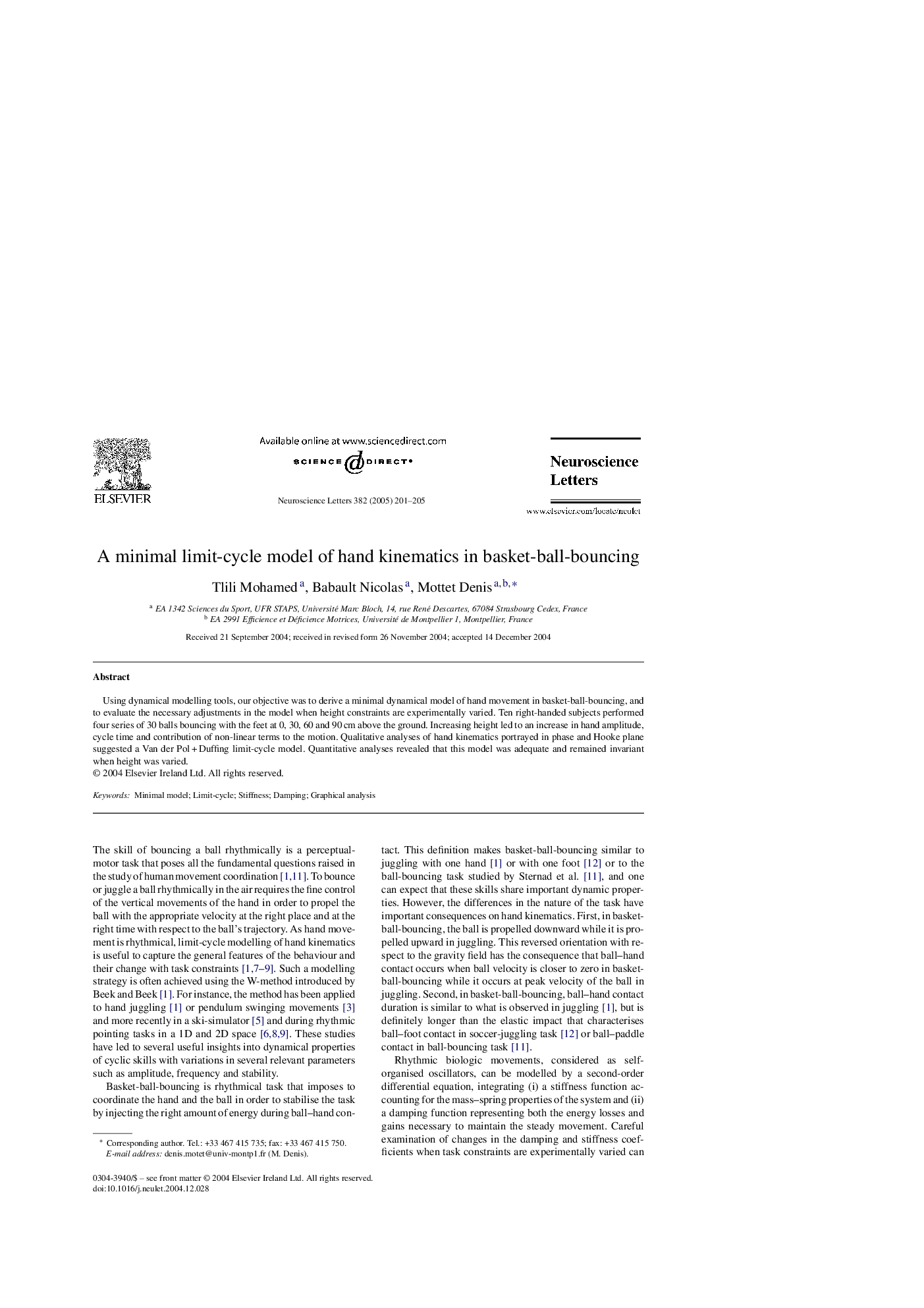| Article ID | Journal | Published Year | Pages | File Type |
|---|---|---|---|---|
| 9429498 | Neuroscience Letters | 2005 | 5 Pages |
Abstract
Using dynamical modelling tools, our objective was to derive a minimal dynamical model of hand movement in basket-ball-bouncing, and to evaluate the necessary adjustments in the model when height constraints are experimentally varied. Ten right-handed subjects performed four series of 30 balls bouncing with the feet at 0, 30, 60 and 90 cm above the ground. Increasing height led to an increase in hand amplitude, cycle time and contribution of non-linear terms to the motion. Qualitative analyses of hand kinematics portrayed in phase and Hooke plane suggested a Van der Pol + Duffing limit-cycle model. Quantitative analyses revealed that this model was adequate and remained invariant when height was varied.
Related Topics
Life Sciences
Neuroscience
Neuroscience (General)
Authors
Tlili Mohamed, Babault Nicolas, Mottet Denis,
